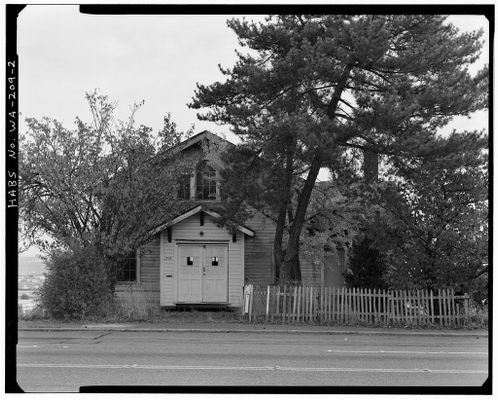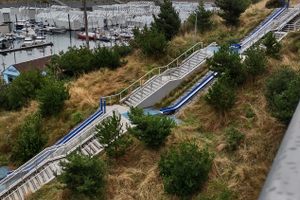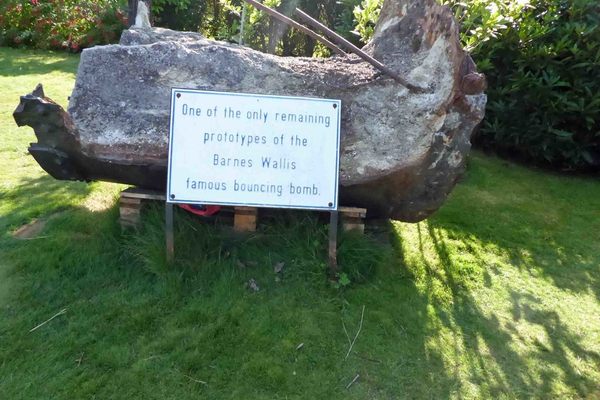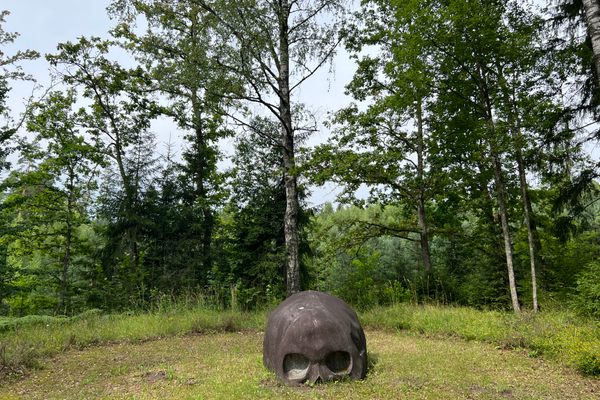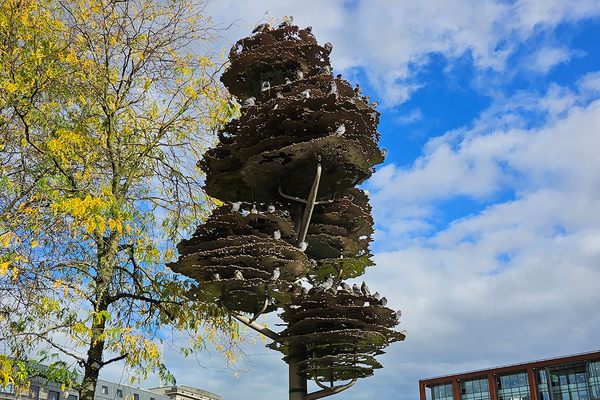About
At the University of Washington Tacoma campus, a small memorial stands in remembrance of the Japanese Language School that was once the thriving center of Japanese-American life in the city. An interpretive plaque relates its history, while a large bronze sculpture commemorates it.
As with many American cities on the Pacific coast, Tacoma experienced a wave of Japanese immigration beginning in the 1880s. They sought better lives in America, many of them second or third sons who were not in line for inheritance. By the 1910s, Tacoma’s Nihonmachi, or Japantown, was thriving, with more than 1,000 residents and 150 businesses. To ensure that nisei (second-generation immigrants) were educated about their cultural identity—while also fitting into English-language society—residents raised funds and built the Japanese Language School.
The driving force behind the school, known as Nihongo Gakko, was the principal, Sensei Masato Yamasaki, and his wife, Kinu. Unlike other Nihongo Gakko across the United States, the language school was one of the few not affiliated with Buddhist or Christian teachings, as Yamasaki emphasized a secular education that taught children Japanese language, history, and culture, as well as civic mindedness and hard work. The school also served as a community center, hosting events and cultural programs.
This ended suddenly in 1942 with the signing of Executive Order 9066, in which President Franklin D. Roosevelt gave the U.S. military the power to remove people of Japanese ancestry from Pacific Coast states. The school was closed, and as a final cruel irony, it became the city’s registration center for the internment of Japanese Americans. Yamasaki was one of the first to be arrested—he died incarcerated in a concentration camp in Lordsburg, New Mexico, the next year. The school never reopened.
The building that had housed the school sat unused for more than 50 years, until the University of Washington bought the site in 1993. The university originally looked to restore the building, but due to its extensive state of decay, officials decided to tear down the building and instead commemorate the locations’ cultural heritage. A nine-foot bronze sculpture, commissioned from artist Gerard Tsutakawa, was unveiled in 2014. Titled “Maru,” it features a circular void in a rectangle, reminiscent of the Japanese flag.
As part of the project, for both the site’s plaques and research purposes, professors from the university documented stories of the lives of the language school’s former students. Many went on to become doctors, nurses, judges, veterans, and teachers themselves, passing down to the values they had learned at Nihongo Gakko.
Related Tags
Know Before You Go
The Japanese Language School Memorial is free and open to the public. Visitors interested in learning more about Tacoma’s Japanese History can refer to the University of Washington Tacoma’s Guide to Japantown.
Community Contributors
Added By
Published
January 22, 2024
Sources
- https://gritcitymag.com/2021/04/changes-coming-to-tacomas-parks/
- https://www.historylink.org/File/20177
- https://www.tacoma.uw.edu/news/remembering-tacomas-nihongo-gakko
- https://magazine.washington.edu/invisible-history-undoing-the-erasure-of-tacomas-japantown/
- https://discovernikkei.org/en/journal/2014/12/02/jls-memorial/




